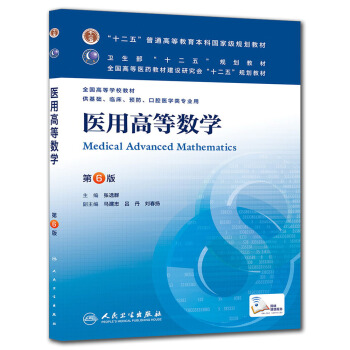![经典数学丛书(影印版):非线性分析方法 [Methods in Nonlinear Analysis]](https://pic.windowsfront.com/11551555/5438761dN1f571147.jpg)

具体描述
内容简介
Many nonlinear analysis problems have their roots in geometry,astronomy,fluid and elastic mechanics,physics,chemistry,biology,control theory,image processing and economics. The theories and methods in nonlinear analysis stem from many areas of mathematics: Ordinary drfferential equations,partial differential equations,the calculus of variations,dynamical systems,differential geometry,Lie groups,algebraic topology,linear and nonlinear functional analysis,measure theory,harmonic analysis,convex analysis,game theory,optimization theory,etc. Amidst solving these problems,many branches are intertwined,thereby advancing each other.The book is the result of many years of revision of the author's lecture notes. Some of the more involved sections were originally used in seminars as introductory parts of some new subjects. However,due to their importance,the materials have been reorganized and supplemented,so that they may be more valuable to the readers.
内页插图
目录
1 Linearization1.1 Differential Calculus in Banach Spaces
1.1.1 Frechet Derivatives and Gateaux Derivatives
1.1.2 Nemytscki Operator
1.1.3 High-Order Derivatives
1.2 Implicit Function Theorem and Continuity Method
1.2.1 Inverse Function Theorem
1.2.2 Applications
1.2.3 Continuity Method
1.3 Lyapunov-Schmidt Reduction and Bifurcation
1.3.1 Bifurcation
1.3.2 Lyapunov-Schmidt Reduction
1.3.3 A Perturbation Problem
1.3.4 Gluing
1.3.5 Transversality
1.4 Hard Implicit Function Theorem
1.4.1 The Small Divisor Problem
1.4.2 Nash-Moser Iteration
2 Fixed-Point Theorems
2.1 Order Method
2.2 Convex Function and Its Subdifferentials
2.2.1 Convex Functions
2.2.2 Subdifferentials
2.3 Convexity and Compactness
2.4 Nonexpansive Maps
2.5 Monotone Mappings
2.6 Maximal Monotone Mapping
3 Degree Theory and Applications
3.1 The Notion of Topological Degree
3.2 Fundamental Properties and Calculations of Brouwer Degrees
3.3 Applications of Brouwer Degree
3.3.1 Brouwer Fixed-Point Theorem
3.3.2 The Borsuk-Ulam Theorem and Its Consequences
3.3.3 Degrees for Sl Equivariant Mappings
3.3.4 Intersection
3.4 Leray-Schauder Degrees
3.5 The Global Bifurcation
3.6 Applications
3.6.1 Degree Theory on Closed Convex Sets ,
3.6.2 Positive Solutions and the Scaling Method
3.6.3 Krein-Rutman Theory for Positive Linear Operators
3.6.4 Multiple Solutions
3.6.5 A Free Boundary Problem
3.6.6 Bridging
3.7 Extensions
3.7.1 Set-Valued Mappings
3.7.2 Strict Set Contraction Mappings and Condensing Mappings
3.7.3 Fredholm Mappings
4 Minimization Methods
4.1 Variational Principles
4.1.1 Constraint Problems
4.1.2 Euler-Lagrange Equation
4.1.3 Dual Variational Principle
4.2 Direct Method
4.2.1 Fundamental Principle
4.2.2 Examples
4.2.3 The Prescribing Gaussian Curvature Problem and the Schwarz Symmetric Rearrangement
4.3 Quasi-Convexity
4.3.1 Weak Continuity and Quasi-Convexity
4.3.2 Morrey Theorem
4.3.3 Nonlinear Elasticity
4.4 Relaxation and Young Measure
4.4.1 Relaxations
4.4.2 Young Measure
4.5 Other Function Spaces
4.5.1 BV Space
4.5.2 Hardy Space and BMO Space
4.5.3 Compensation Compactness
4.5.4 Applications to the Calculus of Variations
……
5 Topological and Variational Methods
Notes
References
前言/序言
用户评价
我是在一个偶然的机会下,在一家专门售卖学术类书籍的二手书店里发现了这本书的。当时我被它“非线性分析方法”这个略显晦涩的标题所吸引,加上“经典数学丛书”的字样,顿时觉得这可能是一本不容错过的宝藏。拿到手中,虽然是影印版,但装订却意外地牢固,纸张泛黄却无破损,看得出它曾经被认真对待过。书中的排版和字体,都透着一股浓浓的时代感,这让我觉得非常亲切。我尝试着翻看了几页,虽然其中不少公式和符号对我而言还比较陌生,但那种严谨的逻辑和清晰的论证方式,依然让我感受到了数学的魅力。我并非数学科班出身,但一直对数学有着浓厚的兴趣,尤其是那些能够解释复杂现象的工具和理论。这本书的标题恰好触碰到了我的好奇点,非线性分析,听起来就充满了挑战性和应用前景。我期待着通过它,能够窥见这个领域的冰山一角,即使不能完全理解,也能从中汲取一些思考问题的方法和视角。
评分这本《经典数学丛书:非线性分析方法》的到来,对我来说,更像是一种对知识的“朝圣”。我之前接触过一些数学相关的书籍,但总觉得它们要么过于浅显,要么过于偏向某个具体应用方向,而缺乏对底层理论的系统梳理。当我知道有这样一套“经典丛书”,并且其中包含了“非线性分析方法”这个专题时,我的兴趣就被彻底点燃了。影印版的呈现方式,虽然在视觉上可能不如现代印刷书籍那般精致,但恰恰是这种“未经雕琢”的质感,让我觉得更加真实和可靠。我猜测,这本影印版的背后,一定凝聚了许多前人的智慧和心血,它不仅仅是一本书,更是一段学术传承的见证。我还没有来得及深入阅读,但我已经开始想象,它会如何为我打开一扇新的思考方式的大门,如何帮助我理解那些表面看似混乱,实则暗藏规律的世界。
评分选择购买这本书,很大程度上是出于一种怀旧的情绪,以及对“经典”二字的天然向往。在信息爆炸的时代,我们很容易被各种新颖的、时髦的知识所吸引,但偶尔也会怀念那些历经时间考验、沉淀下来的精华。这本“经典数学丛书:非线性分析方法”恰好满足了这种需求。影印版的形式,仿佛是开启了一扇通往过去数学研究殿堂的窗口,让我有机会接触到那些可能已经不再轻易被提及的经典著作。拿到书的那一刻,虽然感受到的是纸张的微凉和微微的灰尘气息,但内心却涌起一种莫名的激动。我不是一个专业的研究者,但作为一个对知识充满渴求的普通读者,我更看重的是知识本身的深度和广度,以及它所蕴含的思想。我希望这本书能够像一位沉默的导师,用它古老的智慧,引导我进入非线性分析这个神秘而广阔的领域,即使过程充满挑战,我也愿意去探索。
评分我之前在网上看到一些关于“非线性分析”的科普介绍,觉得这个领域非常吸引人,它似乎能够解释很多现实世界中看似难以捉摸的现象。但是,很多科普读物往往停留在表面,无法深入。当我看到这本《经典数学丛书(影印版):非线性分析方法》时,我便毫不犹豫地入手了。我喜欢这种“影印版”的形式,它让我感觉自己仿佛在翻阅一本来自过去时代的珍贵手稿,能够直接触碰到原著的魅力。虽然我对其中的数学细节可能需要花费很多时间去理解,但这正是我所期待的。我不是一个求快的人,我更愿意花时间和精力去品味知识的醇厚。这本书的出现,对我而言,就像是为我提供了一张通往更深层次理解的地图,让我有机会去探索那个充满挑战与惊喜的非线性世界。
评分这本书的封面设计相当朴实,甚至可以说是有些复古,让我瞬间回想起学生时代在图书馆翻阅旧书的感觉。书脊上的“经典数学丛书”几个字,就带着一种沉甸甸的厚重感,仿佛里面蕴藏着无数智慧的结晶。拿到手的时候,它的纸张触感也很好,不是那种光滑得有些刺手的现代印刷品,而是略带粗糙的质感,散发着淡淡的油墨香,这对于我这样一个喜欢沉浸在书本触感和气息中的读者来说,无疑是一种加分项。虽然我还没有真正开始阅读这本书的内容,但仅仅是它的外观和给人的第一印象,就已经足够吸引我。它不像市面上很多新书那样追求夺人眼球的设计,而是选择了一种内敛而隽永的风格,这让我觉得它可能更专注于知识本身,而不是华而不实的包装。我很好奇,这本“影印版”究竟保留了多少原汁原味的东西,是否能让我感受到那个年代数学研究的严谨与风貌。
评分包装还行,活动时买的。还没看,先收藏。
评分经典书籍,到货很快
评分很好的一本书,很有帮助
评分好好好好好好好好好好好好好好好好好好好好好好好好好好好好好好好好好好好好好好
评分包装还行,活动时买的。还没看,先收藏。
评分挺好的。。。。。。。
评分书脊有损坏,内容与商家无关
评分张院士的书籍,非线性分析很好的参考书
评分Many nonlinear analysis problems have their roots in geometry,astronomy,fluid and elastic mechanics,physics,chemistry,biology,control theory,image processing and economics. The theories and methods in nonlinear analysis stem from many areas of mathematics: Ordinary drfferential equations,partial differential equations,the calculus of variations,dynamical systems,differential geometry,Lie groups,algebraic topology,linear and nonlinear functional analysis,measure theory,harmonic analysis,convex analysis,game theory,optimization theory,etc. Amidst solving these problems,many branches are intertwined,thereby advancing each other.
相关图书
本站所有内容均为互联网搜索引擎提供的公开搜索信息,本站不存储任何数据与内容,任何内容与数据均与本站无关,如有需要请联系相关搜索引擎包括但不限于百度,google,bing,sogou 等
© 2025 book.coffeedeals.club All Rights Reserved. 静流书站 版权所有



![天元基金影印数学丛书:概率论与随机过程中的泛函分析(影印版) [Functional Analysis for Probability and Stochastic Processes] pdf epub mobi 电子书 下载](https://pic.windowsfront.com/10000723/57068347Ned44ad6d.jpg)



![希腊黄金时代的古代科学 [Ancient Science through the Golden Age of Greece] pdf epub mobi 电子书 下载](https://pic.windowsfront.com/10196120/546bf398N60f1aeb5.jpg)





![数学与逻辑 [Mathematics and Logic] pdf epub mobi 电子书 下载](https://pic.windowsfront.com/11545380/541fbaafNd9771250.jpg)


![今日天文 太阳系和地外生命探索(翻译版 原书第8版) [Astronomy Today] pdf epub mobi 电子书 下载](https://pic.windowsfront.com/12015656/5837d88aNa37f3f25.jpg)



